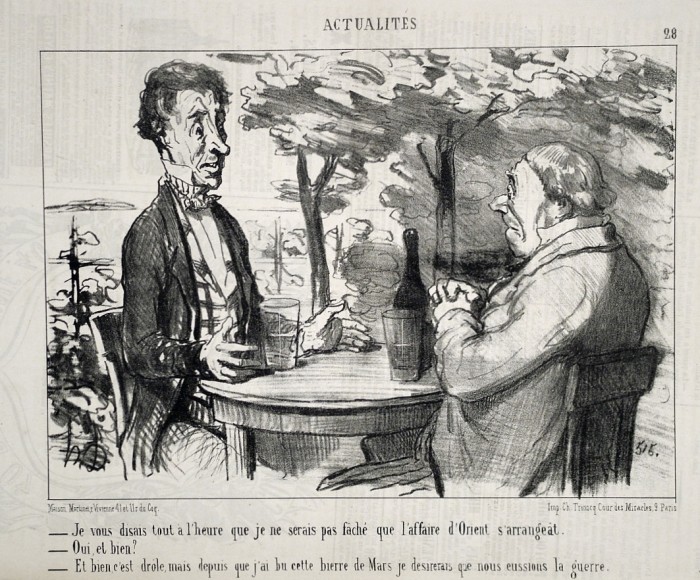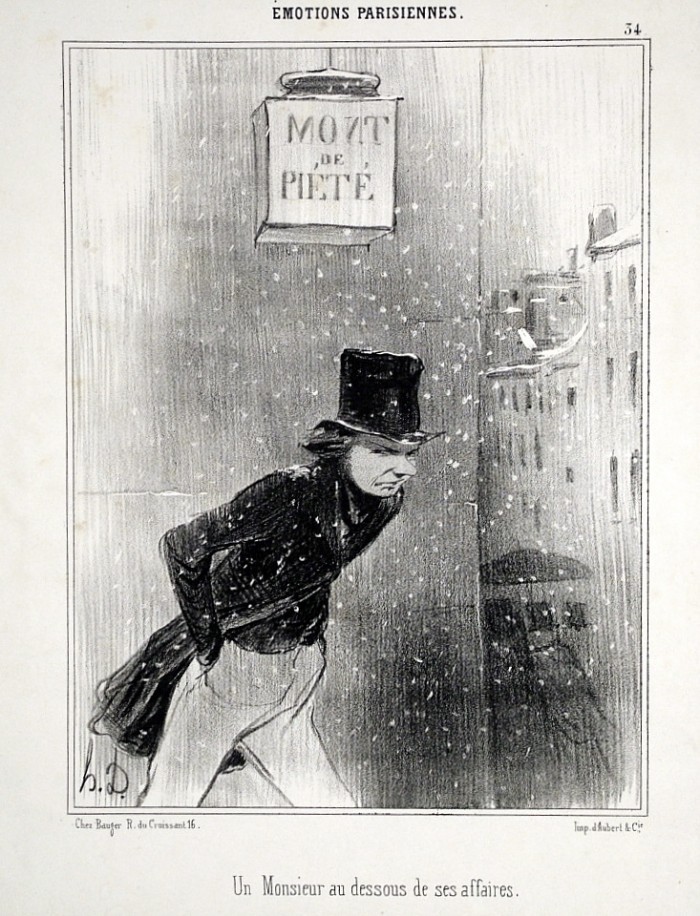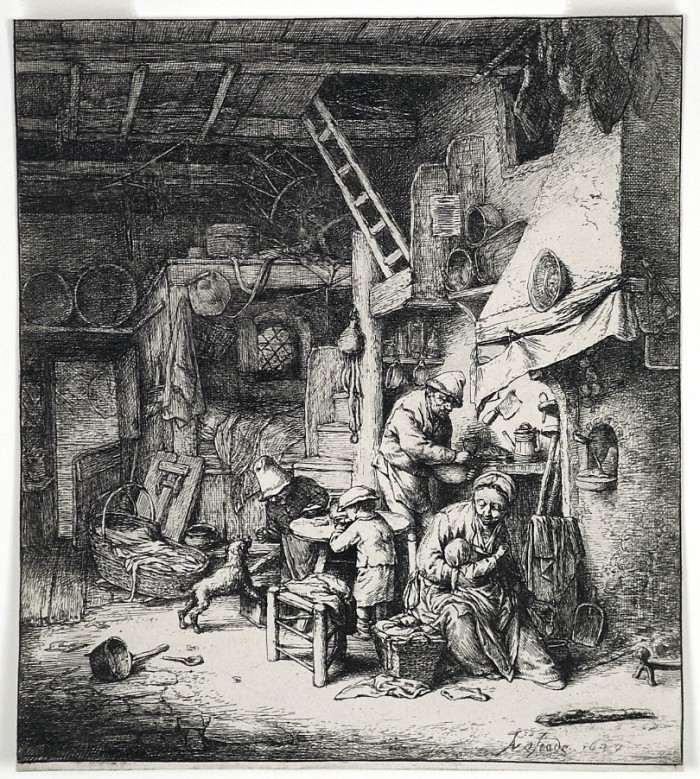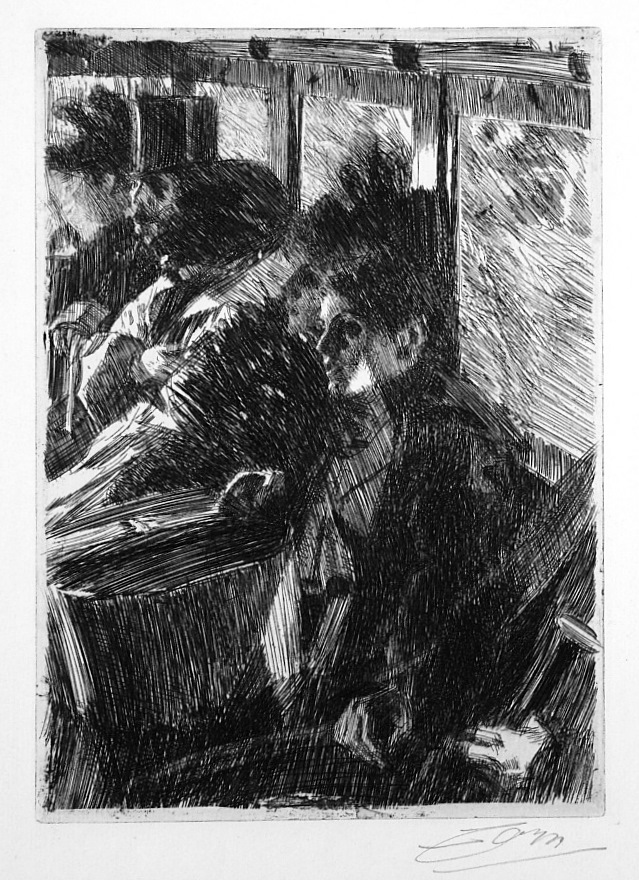Affairs of the Orient
Friday, November 25th, 2011
Honore Daumier (1808-1879), Je vous disais tout à l’heure que je ne serais pas fâché que l’affaire d’Orient s’arrangeât. Lithograph, 1853, published in Le Charivari in 1853. A newsprint impression, with the lettering from Le Charivari verso. Reference: Daumier Register, second state (of three), before the changes made for publication in LE CHARIVARI BELGE. Plate number 28 from the series ACTUALITÉS.
In general Daumier was opposed to France’s using military force against its neighbors. The Daumier Register points out that in Daumier’s prints Mars is the personification of war threats. In this print, on the eve of the Crimean War (1854-6), his characters talk of the impending conflict, one saying that after he drank Mars beer he found himself hoping for war.
The Crimean War was a conflict fought between the Russian Empire and an alliance of the French, British, and Ottoman Empires, and the Kingdom of Sardinia. The war was part of a long-running contest between the major European powers for influence over territories of the declining Ottoman Empire.
Translation from the Daumier Register: Original Text:
– Je vous disais tout à l’heure que je ne serais pas fâché que l’affaire d’Orient s’arrangeât.
– Oui, et bien?
– Eh bien c’est drôle, mais depuis que j’ai bu cette bière de Mars je désirerais que nous eussions la guerre.
Translation:
– I was saying to you not long ago that I would not be angered if the affairs of the Orient would arrange themselves.
– Yes, and?
– It’s strange, but after I drank this March beer (note: Mars beer) I was hoping for war.
$125




